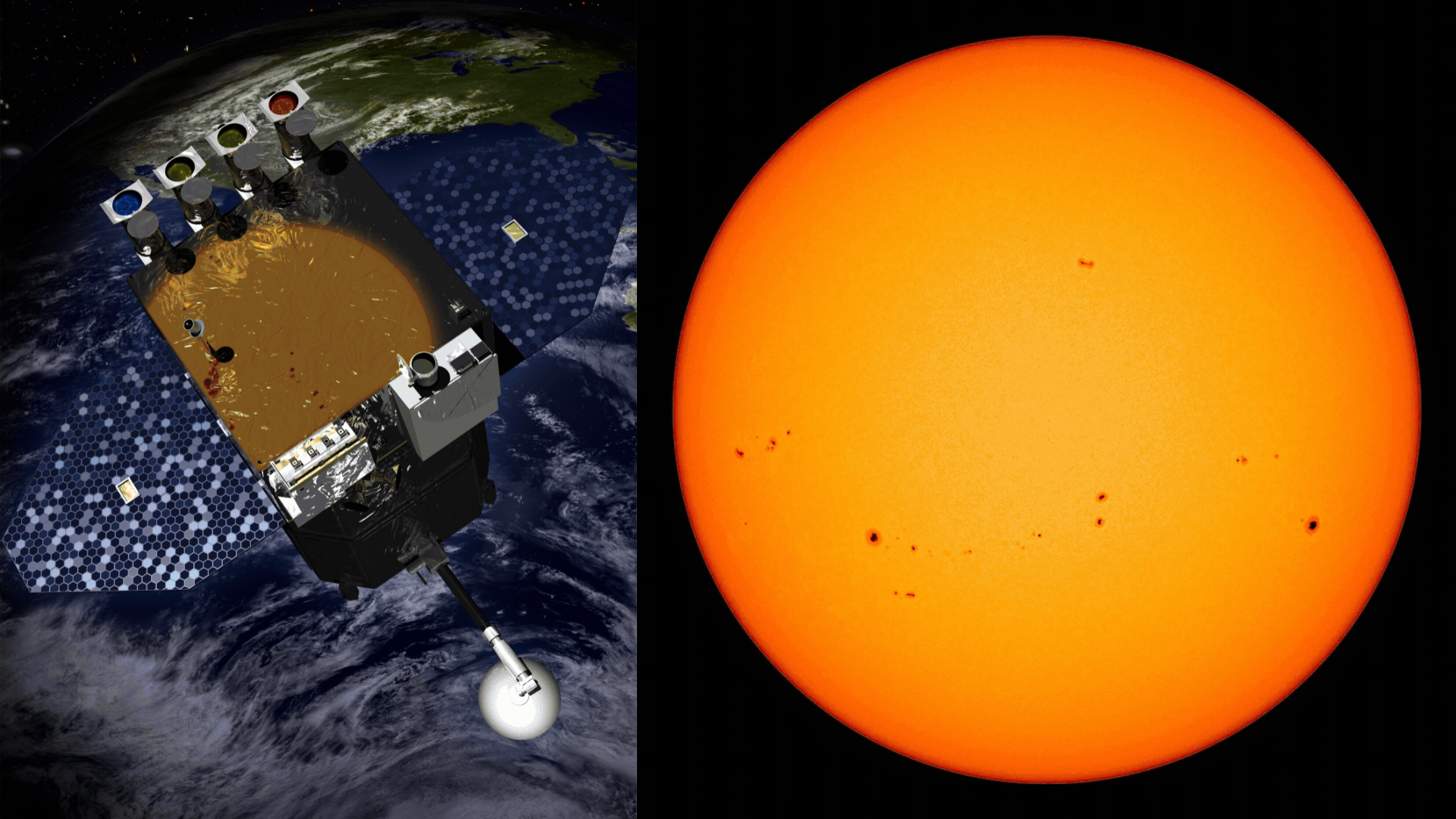
The Solar Dynamics Observatory (SDO) is a NASA mission designed to study activity on the sun, learn what drives that activity, and explore its impact on space weather, which can ultimately result in dramatic geomagnetic storms on Earth.
In particular, SDO is seeking to discover the secrets of the sun's magnetic field. For example, how does the sun generate a dynamo effect to produce its magnetic field? What structure does the magnetic field take as it emanates from the sun's surface, known as the photosphere? How is the magnetic field reflected in the sun's 11-year cycle of activity? And how does the energy carried within the sun's magnetic field ultimately transform into the energy that drives charged particles in the solar wind?
Solar Dynamics Observatory FAQs
What is the Solar Dynamics Observatory?
The Solar Dynamics Observatory is a mission designed to observe the sun from 22,245 miles above Earth, measuring how solar magnetic activity affects space weather by releasing solar wind and coronal mass ejections.
Is the Solar Dynamics Observatory still operating?
The SDO mission has been in operation since the spacecraft launched in February 2010 and is expected to continue until at least 2030.
What has the Solar Dynamics Observatory learned about the sun?
By focusing on what drives the sun's magnetic activity, SDO has given solar scientists a better understanding of the solar cycle and how to predict when one cycle will end and another will begin, as well as revealed explosive activity and magnetic tornadoes on the solar surface.
When did the Solar Dynamics Observatory launch?
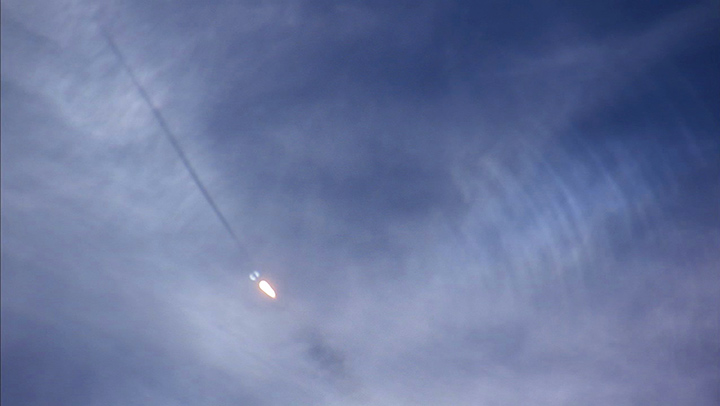
SDO blasted off on Feb. 11, 2010, riding into space on an Atlas V rocket, which initially placed SDO into an orbit 1,550 miles (2,500 kilometers) above Earth's surface. A series of engine burns then raised the spacecraft's orbit, until it achieved its final geosynchronous orbit 22,245 miles (35,800 km)above the surface on March 16, 2010.
A geosynchronous orbit keeps a spacecraft directly above a specific location on the ground — in other words, the spacecraft's orbital period matches the period of Earth's rotation. The European Space Agency describes how a spacecraft in geosynchronous orbit must have an orbital velocity of 1.86 miles per second (3 kilometers per second) to keep pace with Earth's rotation.
In a 2011 paper published in the journal Solar Physics, SDO project scientists William Dean Pesnell, Barbara Thompson and Phillip Chamberlin explained why it is vital for SDO to be in geosynchronous orbit. Every day, SDO collects as much as 1.4TB of data, and back in 2010, when SDO launched, there was no space-qualified data recorder that could store that much data. Instead, the data must be relayed to the ground instantly, meaning SDO must always be in sight of a receiving station on the ground. This is why geosynchronous orbit makes sense for SDO: The spacecraft is always above the ground station at White Sands Missile Range in New Mexico, maintaining constant communication and transfer of data.
What does the Solar Dynamics Observatory do?
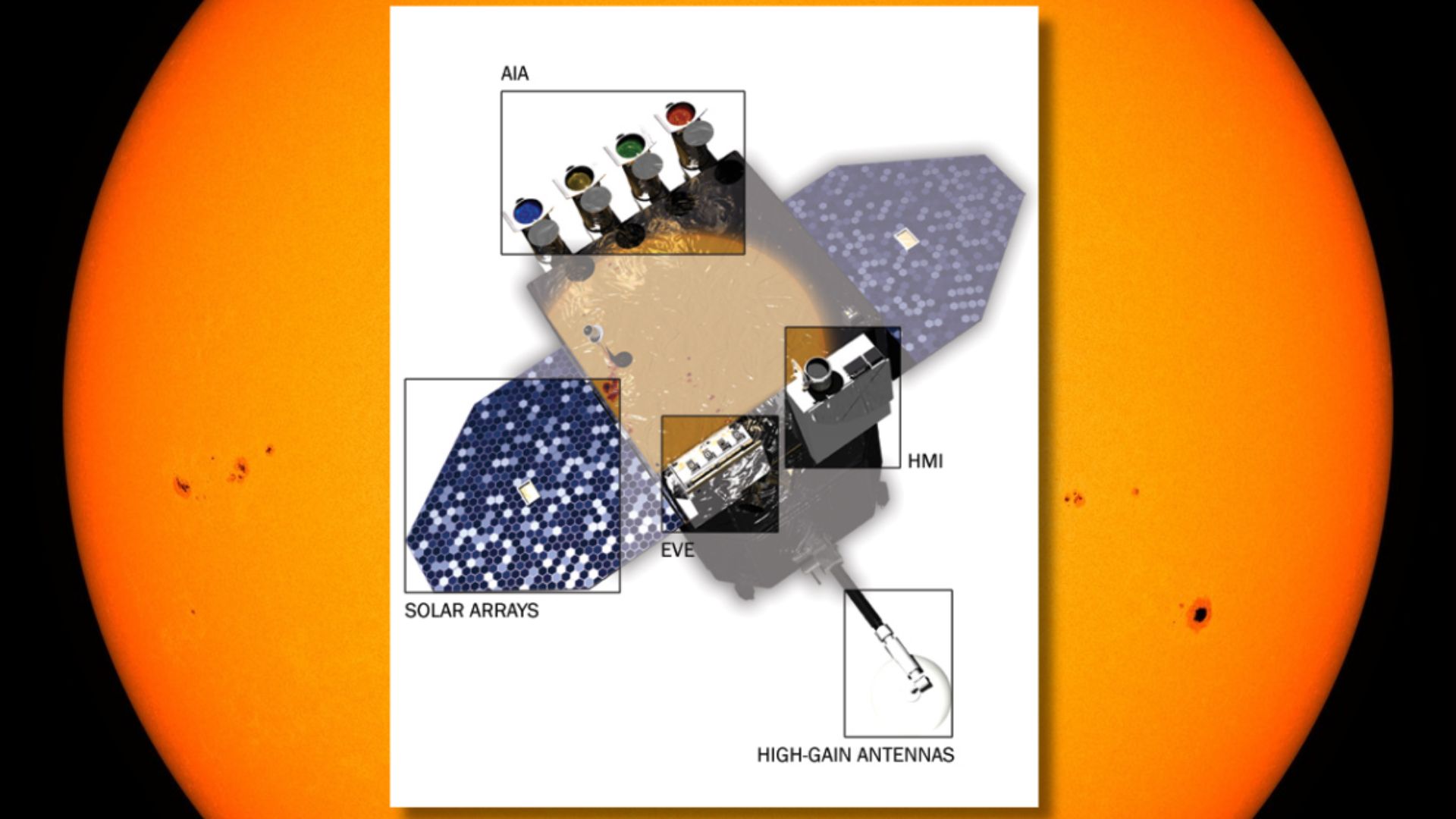
SDO carries three instruments: the Helioseismic and Magnetic Imager (HMI), the Atmospheric Imaging Assembly (AIA), and the Extreme Ultraviolet Variability Experiment. With these instruments, SDO can observe the full disk of the sun.
According to the official website for the HMI, which was built by solar scientists at Stanford University, the instrument is "designed to study oscillations and the magnetic field at the solar surface." It observes the sun with a resolution of 1 arc second (1 angular degree equals 3,600 arc seconds) centered on a wavelength of 6,173 angstroms (Å). An angstrom is equal to 0.1 nanometers, or 10 billionths of a meter, so 6,173 Å is about 61 millionths of a meter. This wavelength corresponds to yellow-orange light.
By observing and measuring the amount of motion on the sun's surface, the HMI can study oscillations rippling through the sun. Just as seismic waves reverberating through Earth teach us about our planet's interior, solar oscillations can reveal details about the sun's interior and the processes there that generate magnetic activity.
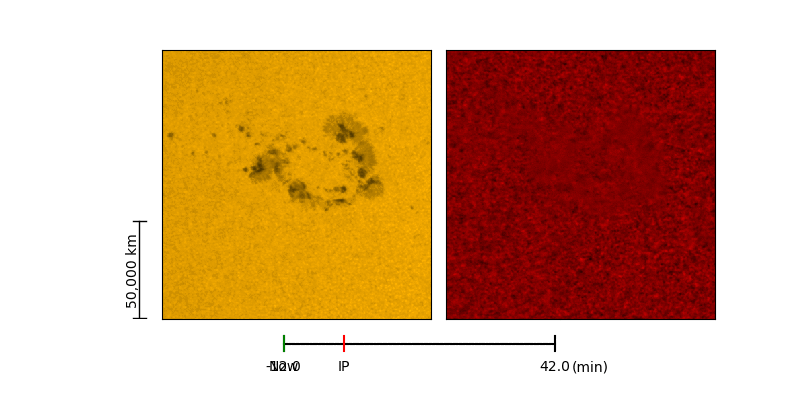
AIA can reveal activity in the sun's corona, also to a resolution of 1 arc second. According to Lockheed Martin's website for the instrument, the AIA "takes images that span at least 1.3 solar diameters in multiple wavelengths nearly simultaneously."
These wavelengths are much shorter than those observed by the HMI; they are in what's called extreme ultraviolet light, between 131 and 335 Å, from spectral lines of ionized iron and helium. Studying the sun in ultraviolet light is essential because many of the high-energy processes on the sun emit in ultraviolet light, particularly in the corona, where the temperature exceeds a million degrees. In particular, the AIA is looking at what heats the solar corona and how energy is stored in the corona before being released into space in the solar wind.
EVE measures the total amount of ultraviolet light emitted by solar flares and how the amount of ultraviolet varies. This is important because it is this ultraviolet irradiance that heats our planet's thermosphere (the upper part of Earth's atmosphere).
What has the Solar Dynamics Observatory learned about the sun?
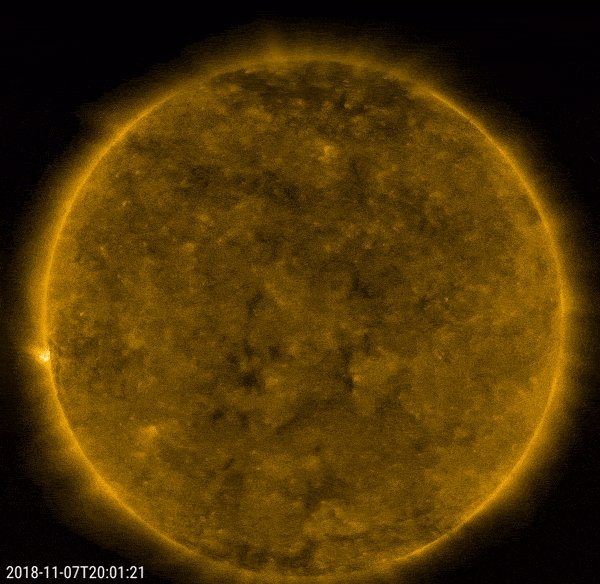
SDO has learned a great deal about the sun and the space weather it produces. In 2020, NASA summarized 10 things that SDO has discovered.
Late phase flares
First up, by observing about 200 solar flares, SDO found that 15% of them have a "late phase flare" — a second flare that follows minutes to hours after the primary flare, a bit like an earthquake aftershock. SDO also found magnetic vortices that produce tornadoes of plasma whirling at 186,000 mph (300,000 km/h).
Spontaneous events
Even more explosive are spontaneous magnetic reconnection events, which SDO discovered occurring on the sun. During these events, magnetic-field lines on the sun, taut with magnetic energy, snap after interacting with the falling plasma in a solar prominence. After the energy is released, the magnetic-field lines reconnect, hence the name.
Plasma waves and the birth of sunspots
There are also giant, complex waves of plasma that ride across the sun's photosphere at up to 149 miles per second (238 km per second), which SDO found are likely connected to the disturbances caused by coronal mass ejections (CMEs). On grander scales, SDO mapped the meridional flow, which describes large-scale circulation patterns across the sun and how they might be linked to the birth of sunspots.
Sunspots are connected to the sun's 11-year cycle of magnetic activity, with the most sunspots appearing at solar maximum, the peak of solar activity. SDO has now seen one solar cycle — number 24 — from beginning to end, giving solar physicists insight into the signs that one cycle is about to end and another is about to begin. Understanding the solar cycle and the space weather it instigates is important for protecting satellites, communication networks and power grids from potentially harmful geomagnetic storms.
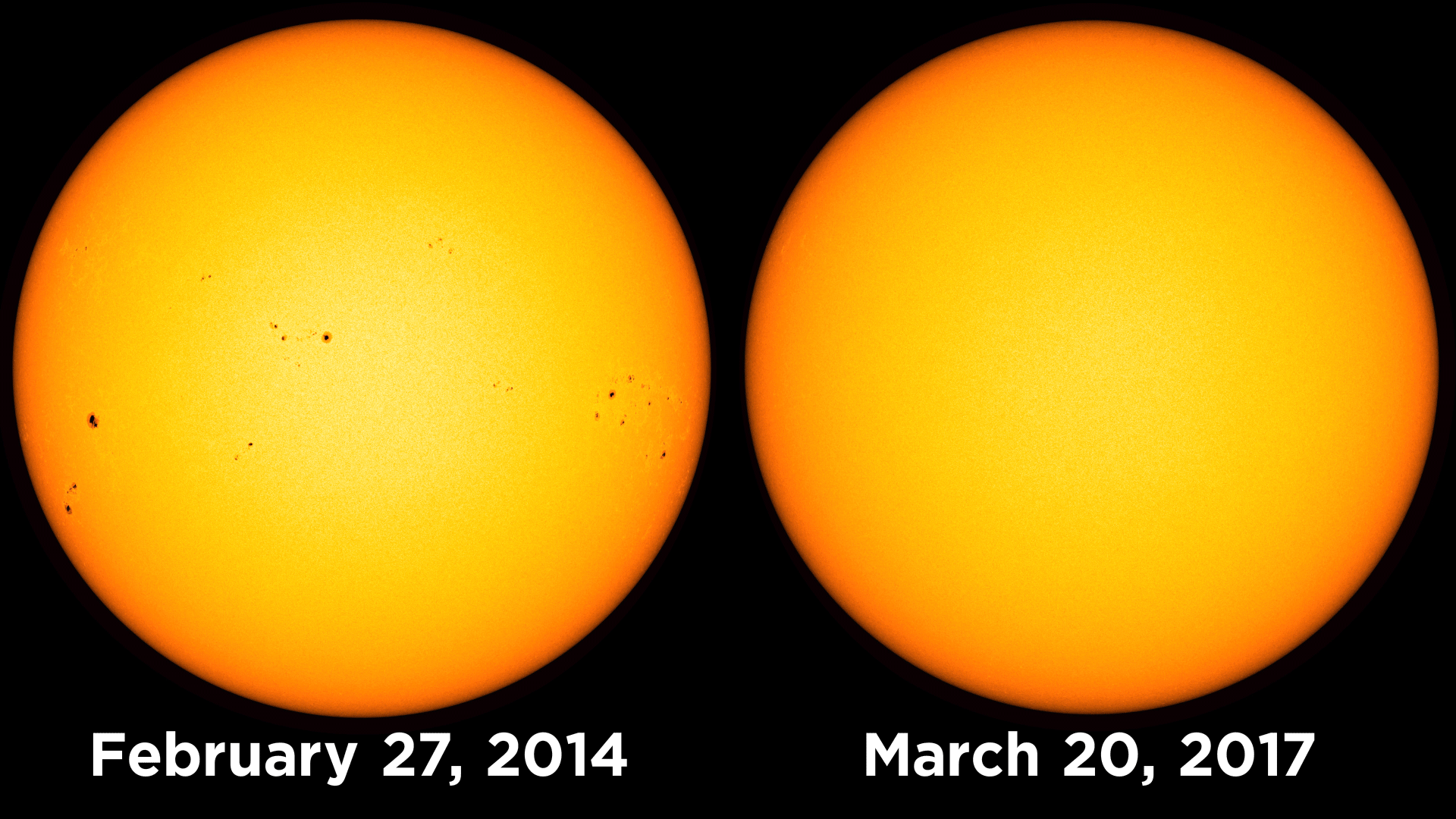
Coronal dimming
Then, there's the solar corona. SDO measured how CMEs can cause the corona to dim, and this knowledge could be applied to other stars to better understand their activity. SDO also saw the disappearance of coronal holes, which are tied to the solar cycle, and used the demise of these coronal holes to predict the reversal of the sun's magnetic field and the beginning of a new solar cycle.
Solar scientists have also used SDO's observations to model how a CME leaves the sun and travels through the solar system to predict how CMEs could affect Earth.
Comet watch
Finally, SDO has watched comets pass dangerously close to the sun. One, comet C/2011 W3 (Lovejoy), came within 516,000 miles (830,400 km) of the sun and initially survived, before later crumbling due to thermal stresses. Another comet, ISON, broke up more quickly and vaporized when it got too close to the sun in 2013.
These discoveries, coupled with the clearest images of the sun's disk taken up until then, mean SDO has played a crucial role in scientists' understanding of solar activity.
Is the Solar Dynamics Observatory still operational?
Yes, as of June 2024, SDO was still observing the sun and returning images of solar activity daily. You can see SDO's latest imagery on its website.
SDO's original mission was to operate for five years, which would have taken it up to 2015. Since then, however, it has received a series of mission extensions and is now expected to last until at least 2030.
Additional resources
SDO is part of NASA's Living With a Star program, which is designed to explore space weather that can affect Earth. You can read more about it on NASA's Living With a Star page.SDO has worked closely with another solar observing mission from NASA, called the Solar Terrestrial Relations Observatory (STEREO). STEREO consists of two spacecraft, A and B, which monitor the space between the sun and Earth for solar storms. Visit the STEREO mission website to learn more. Learn about the different wavelengths of light that SDO observes on this page from NASA's Scientific Visualization Studio.
Bibliography
'About the SDO Mission', NASA, https://sdo.gsfc.nasa.gov/mission/
'SDO Science: The sun and Magnetism', NASA, https://sdo.gsfc.nasa.gov/mission/science.php#:~:text=The%20sun%20and%20Magnetism,in%20the%20sun's%20convection%20zone.
'SDO Launch', NASA Kennedy (2010), https://www.youtube.com/watch?v=AIBr3wlL4X8
'Solar Dynamics Observatory (SDO) Launches', NASA (2010), https://www.nasa.gov/image-article/solar-dynamics-observatory-sdo-launches/
'Basics of Spaceflight Chapter 5: Planetary Orbits' (2024), https://science.nasa.gov/learn/basics-of-space-flight/chapter5-1/
'Types of Orbits', European Space Agency (2020), https://www.esa.int/Enabling_Support/Space_Transportation/Types_of_orbits#GEO
W. Dean Pesnell, B. J. Thompson, P. C. Chamberlin, 'The Solar Dynamics Observatory', Solar Physics, Vol 275, pp3–15 (2012), https://link.springer.com/article/10.1007/s11207-011-9841-3
'Solar Dynamics Observatory Brochure', https://sdo.gsfc.nasa.gov/assets/docs/SDO_Brochure.pdf
Marco Midon, Thomas Bialas, Hollys Allen, 'NASA Ground Station Support of the Solar Dynamics Observatory (SDO) Mission', SpaceOps 2006 Conference, American Institute of Aeronautics and Astronautics (2006), https://arc.aiaa.org/doi/pdfplus/10.2514/6.2006-5837
Stanford Solar Group, 'Helioseismic and Magnetic Imager — Welcome to the HMI Home Page (2010), http://hmi.stanford.edu/
J. Todd Hoeksema et al, 'The Helioseismic and Magnetic Imager (HMI) Vector Magnetic Field Pipeline: Overview and Performance', Solar Physics, Vol 289, pp3483–3530 (2014), https://link.springer.com/article/10.1007/s11207-014-0516-8
Stanford Solar Group, 'Helioseismic and Magnetic Imager Investigation' (2010), http://hmi.stanford.edu/Description/HMI_Overview.html
Lockheed Martin, 'SDO's Atmospheric Imaging Assembly (AIA)', https://aia.lmsal.com/
James R. Lemen et al, 'The Atmospheric Imaging Assembly (AIA) on the Solar Dynamics Observatory (SDO)', Solar Physics, Vol 275, pp17–40 (2012), https://link.springer.com/article/10.1007/s11207-011-9776-8
Laboratory for Atmospheric and Space Physics, University of Colorado Boulder, 'Extreme Ultraviolet Variability Experiment', https://lasp.colorado.edu/eve/science/instrument/
T. N. Woods et al, 'Extreme Ultraviolet Variability Experiment (EVE) on the Solar Dynamics Observatory (SDO): Overview of Science Objectives, Instrument Design, Data Products, and Model Developments' Solar Physics, Vol 275, pp115–143 (2012), https://link.springer.com/article/10.1007/s11207-009-9487-6
NASA Space Place — Explorer Earth and Space! https://spaceplace.nasa.gov/thermosphere/en/
Katy Mersmann, 'Ten Things We've Learned About the sun From NASA's SDO This Decade' (2020), https://www.nasa.gov/solar-system/ten-things-weve-learned-about-the-sun-from-nasas-sdo-this-decade/
'Solar Tornados as Seen by SDO (February 7, 2012) NASA/Goddard Space Flight Center Scientific Visualization Studio (2012), https://svs.gsfc.nasa.gov/3919
Vanessa Thomas, NASA's SDO Sees New Kind of Magnetic Explosion on sun (2019), https://www.nasa.gov/missions/sdo/nasas-sdo-sees-new-kind-of-magnetic-explosion-on-sun/
Wei Liu et al, 'First SDO AIA Observations of a Global Coronal EUV 'Wave': Multiple Components and Ripples', The Astrophysical Journal Letters, 723, L53–59 (2010), https://iopscience.iop.org/article/10.1088/2041-8205/723/1/L53/pdf
W. Dean Pesnell, 'Lessons learned from predictions of Solar Cycle 24', Journal of Space Weather and Space Climate, Vol 10 (2020), https://www.swsc-journal.org/articles/swsc/full_html/2020/01/swsc200057/swsc200057.html
Coronal Holes, Space Weather Prediction Center, https://www.swpc.noaa.gov/phenomena/coronal-holes
Zdenek Sekanina and Paul Chodas, 'Comet C/2011 W3 (Lovejoy): Orbit Determination, Outbursts, Disintegration of Nucleus, Dust-Tail Morphology and Relationship to New Cluster of Bright sungrazers', The Astrophysical Journal, Vol 757, No 2 (2012), https://iopscience.iop.org/article/10.1088/0004-637X/757/2/127
'Clearest Ever Pictures of the sun Returned from NASA's Solar Dynamics Observatory', STFC/RALSpace (2010), https://www.ralspace.stfc.ac.uk/Pages/Clearest-ever-pictures-of-the-sun-returned-from-NASA's-Solar-Dynamics-Observatory.aspx







